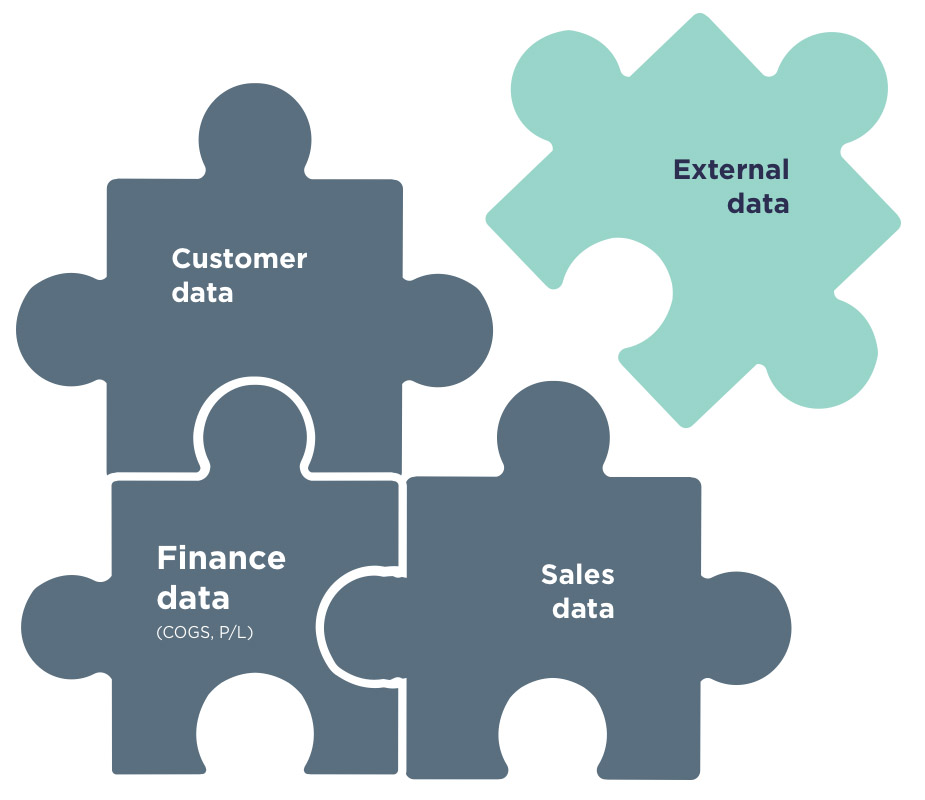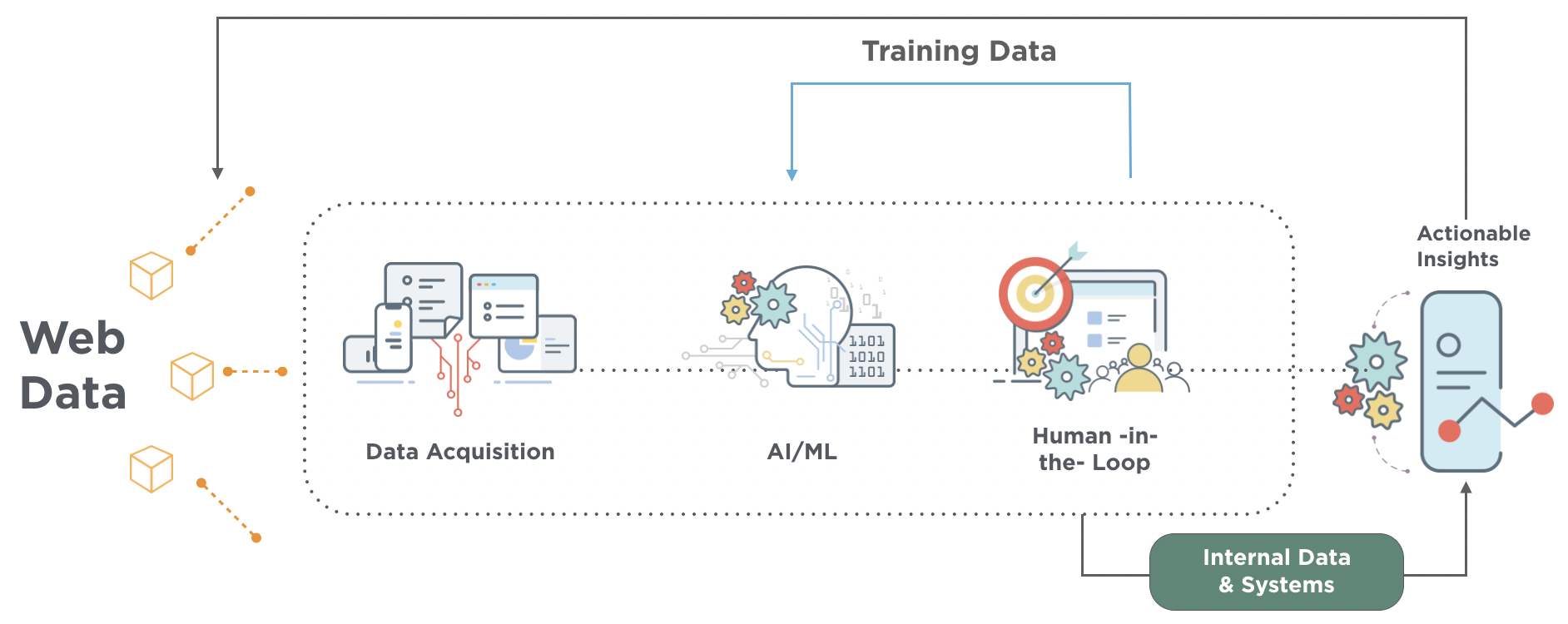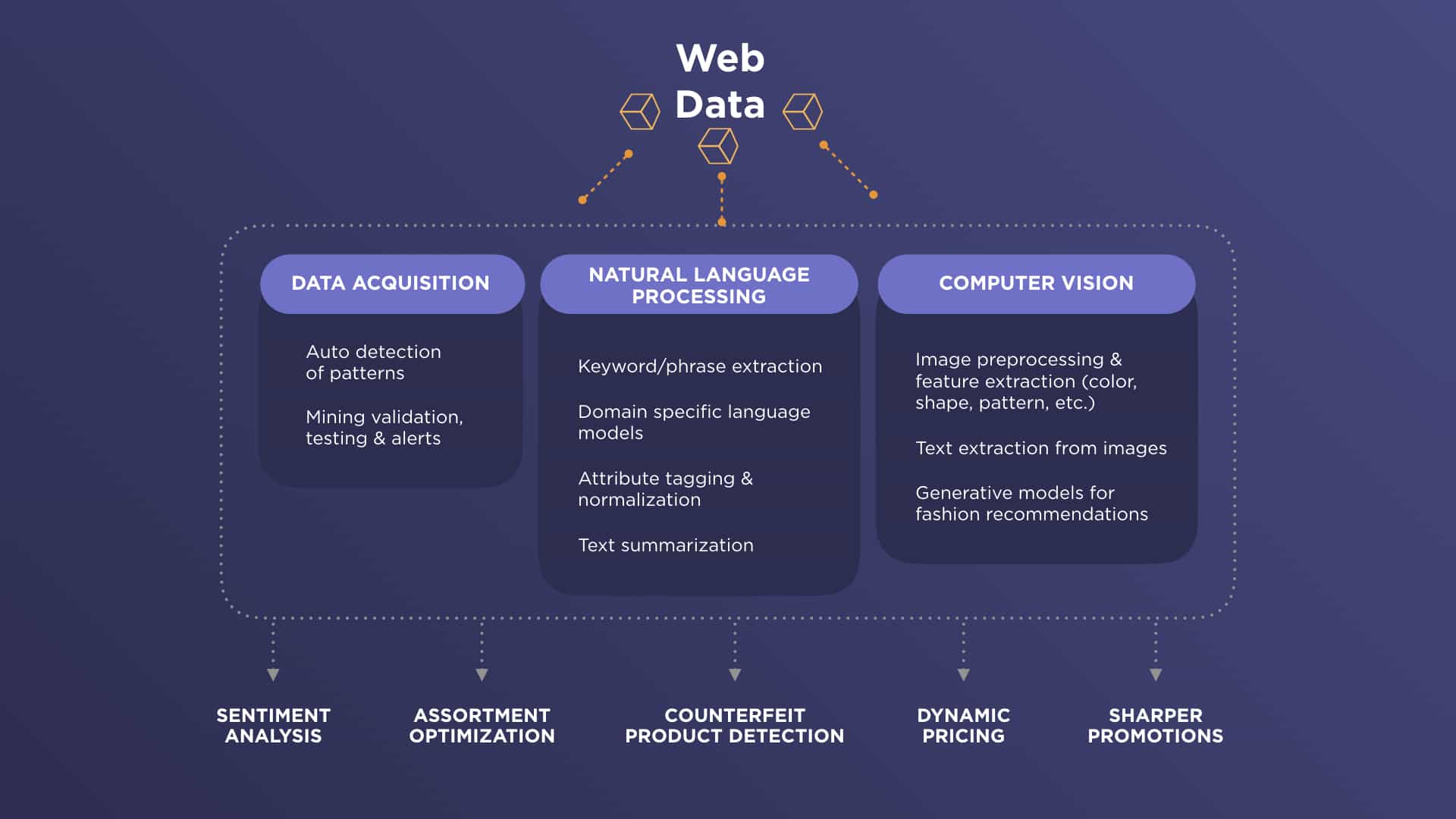AI is everywhere. Any retailer worth his salt knows that in today’s hyper-competitive environment, you can’t win just by fighting hard – you have to do it by fighting smart. The solution? Retailers are turning to AI in droves.
The problem is that many organizations regard AI as a black box of sorts – where you can throw all your data (the digital era’s blessing that feels like a curse) in at one end and have miraculously meaningful output appearing out the other. The reality of how AI works, however, is a lot more complex. It takes a lot of work to make AI work for you – and then to derive value out of it.

Following the advent of the digital era, businesses across industries, particularly retail, were left grappling with massive amounts of internal data. To make things worse, this data was unstructured and siloed, making it difficult to process effectively. Yet, businesses learned to leverage simple analytics to extract relevant data and insights to affect smarter decisions.
But just as that happened, the e-commerce revolution stirred things up again. As businesses of all shapes, sizes, and types moved online, they suddenly became a whole lot more vulnerable to other players’ movements than they were just about a decade ago, when buyers rarely visited more than one store before they made a purchase. In other words, retailers are now operating in entire ecosystems – with consumers evaluating a number of retailers before making a purchase, and a disproportionate number of players vying for the same consumer mindshare and share of wallet.
Thus, external data from the web – the largest source of data known to man at present – is becoming critical to business’ ability to compete profitably in the market.
Competing profitably in the digital era: Can AI help?
As organizations across industries and geographies increasingly realized that their business decisions were affected by what’s happening around them (such as competitors’ pricing and merchandize decisions), they started shifting away from their excessive obsession with internal data, and began to look for ways to gather external data, integrate it with their internal data, and process it all in entirety to derive wholesome, meaningful insights.

Simply put, harnessing external data consistently and on a large scale is the only way for businesses to gain a sustainable competitive advantage in the retail market. And the only way to practically accomplish that is with the help of AI. Many global giants are already doing this – they’re analyzing loads of external data every minute to take smarter decisions.
That said, though, what you need to know is that all this data, while publicly available and therefore accessible, is massive, unstructured, noisy, scattered, dynamic, and incomplete. There’s no algorithm in the world that can start working on it overnight to churn out valuable insights. AI can only be effective if enormous amounts of training data is constantly fed back into it, coaxing it to get better and more astute each time. However, given the scarcity of readily available training datasets, limited and unreliable access to domain-specific data, and the inconsistent nature of the data itself, a majority of AI initiatives have ended up in a “garbage in, garbage out” loop that they can’t break out of.
What you need is the perfect storm
At DataWeave, we understand the challenge of blindly dealing with data at such a daunting scale. We get that what you need is a practical way to apply AI to the abundant web data out there and generate specific, relevant, and actionable insights that enable you to make the right decisions at the right time. That’s why we’ve developed a system that runs on a human-aided-machine-intelligence driven virtuous loop, ensuring better, sharper outcomes each time.

Our technology platform includes four modules:
1. Data aggregation: Here, we capture public web data at scale – whatever format, size, or shape it’s in – by deploying a variety of techniques.
2. AI-driven analytics: Since the gathered data is extremely raw, it’s cleaned, curated, and normalized to remove the noise and prepare it for the AI layer, which then analyzes the data and generates insights.
3. Human-supervised feedback: Though AI is getting smarter with time, we see that it’s still far from human cognitive capabilities – so we’ve introduced a human in the loop to validate the AI-generated insights, and use this as training data that gets fed back to the AI layer. Essentially, we use human intelligence to make AI smarter.
4. Data-driven decision-making: Once the data has been analyzed and the insights generated, they can either be used as it to drive decision-making, or then integrated with internal data for decision-making at a higher level.
With intelligent, data-backed decision-making capabilities, you can outperform your competitors

Understandably, pricing is one of the most popular applications of data analytics in retail. For instance, a leading, US-based online furniture retailer approached us with the mission-critical challenge of pricing products just right to maximize sell-through rates as well as gross margin in a cost-effective and sustainable manner. We matched about 2.5 million SKUs across 75 competitor websites using AI and captured pricing, discounts, and stock status data every day. As a result, we were able to affect an up to 30% average increase in the sales of the products tracked, and up to a 3x increase in their gross margin.
DataWeave’s powerful AI-driven platform is essentially an engine that can help you aggregate and process external data at scale and in near-real time to manage unavoidably high competition and margin pressures by enabling much sharper business decisions than before. The potential applications for the resulting insights are diverse – ranging from pricing, merchandize optimization, determination of customer perception, brand governance, and business performance analysis.
If you’d like to learn more about our unique approach to AI-driven competitive intelligence in retail, reach out to us for a demo today!
